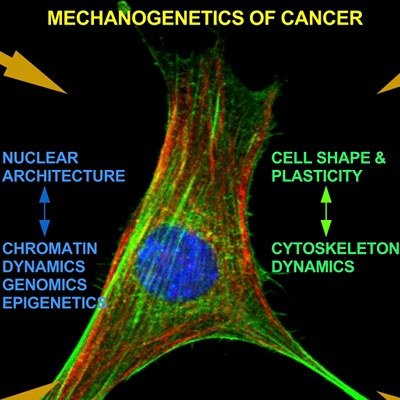Physics of biological systems
Spiral wave in a model of the uterus
 mechano-genetics of cancer
mechano-genetics of cancer
Françoise Argoul, Alain Arnéodo, Benjamin Audit
In cancers the genome architecture is often impacted directly by mutations and/or translocations or chromatin rearrangements, but the influence of the cellular microenvironment may also change the spatio-temporal program of replication and gene expression in proteins. Indeed, epigenetics factors are actually predominant in the regulation of the cell function. To construct a systemic model of the cellular mechanosensitivity to its environment, we propose to combine single cell experiments in confined geometries with a multi-scale analysis of different markers of the nuclear mechanisms, such as replication timing profiles, RNAseq expression profiles, Chipseq epigenetic profiles, chromatin conformation capture data, DNA sequence analysis and nucleosome positioning data.
 non-linear synchronisation
non-linear synchronisation
Synchronisation of a large number of cells is a prerequisite for many organs to correctly perform their tasks. In the well-known case of the heart, a lack of synchronisation of the "pump" leads to a drop of blood pressure, and ultimately to death. Our work is currently focusing on the generation of contraction of the uterus before delivery. It has been observed that the appearance of synchronised activity in this muscle is preceded by a sharp increase in the coupling between cells, thus providing some important hint for modelling.



